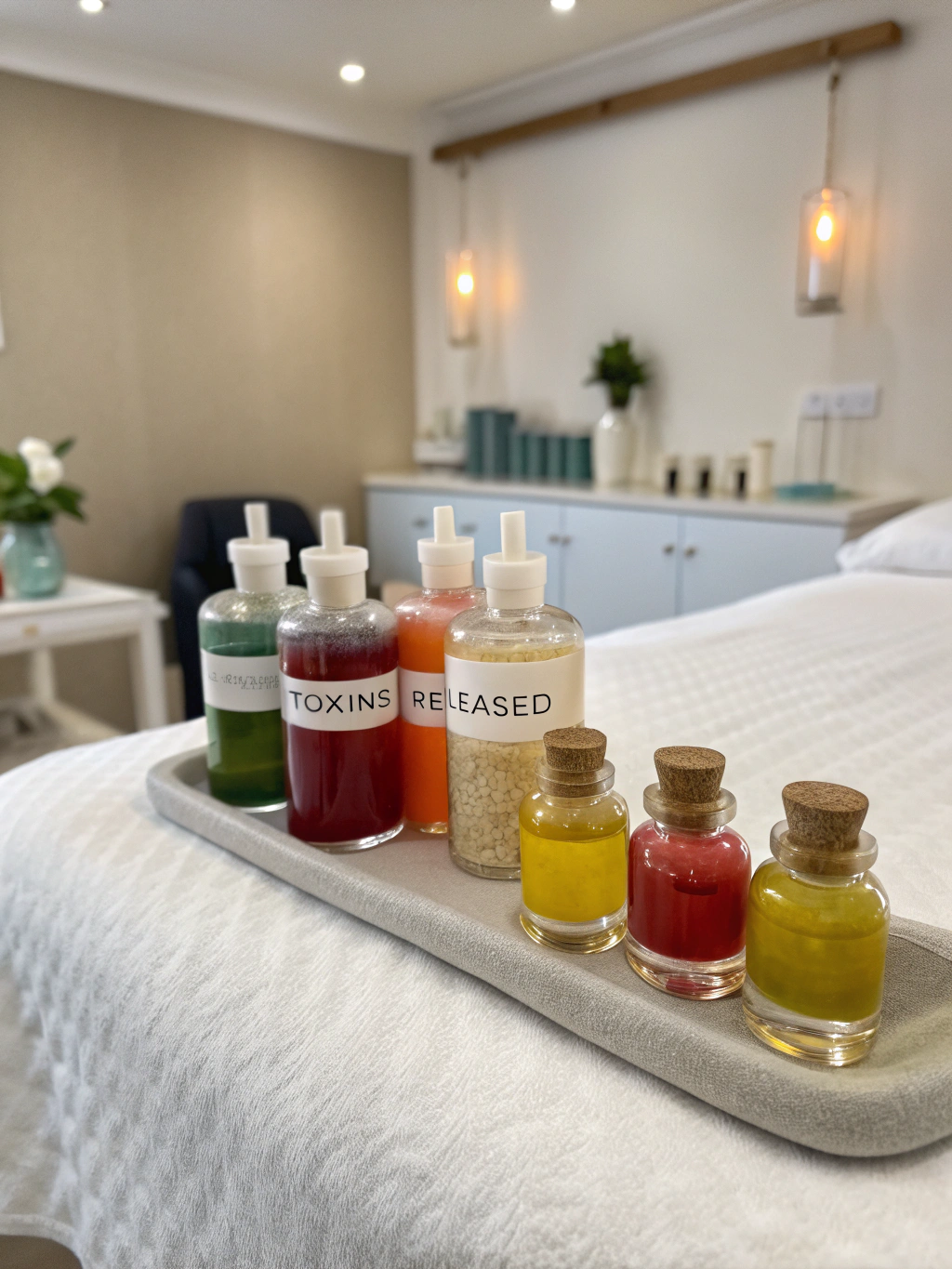How to Flush What Toxins Are Released After Massage Fast
Table of Contents
Introduction
Ever felt groggy or slightly unwell after that relaxing massage you were so looking forward to? You’re not alone. While massages are celebrated for their therapeutic benefits, many people experience what therapists call a “healing crisis” afterward. This reaction happens because what toxins are released after massage can temporarily overwhelm your body’s natural detoxification systems. The good news? This reaction is actually a sign that your massage is working—breaking down stored toxins and helping your body begin the process of eliminating them.
Key Information Snapshot
• Common toxins released during massage:
- Lactic acid
- Metabolic waste products
- Inflammatory cytokines
- Stored stress hormones
- Environmental toxins
• Post-massage detox symptoms:
- Temporary fatigue (24-48 hours)
- Mild headache
- Increased urination
- Thirst or mild dehydration
- Soreness in worked areas
• Recovery timeline: Most people return to normal within 24-48 hours with proper hydration and rest
Detailed Explanation
What Happens During a Massage?
When you receive a massage, the therapist applies pressure to your muscles and soft tissues, which creates several physiological responses. This pressure breaks up adhesions (knots) in your muscles and stimulates circulation. The increased blood flow helps flush cellular debris and what toxins are released after a massage from your tissues into your circulatory system.
The 5 Main Toxins Released During Massage
1. Lactic Acid
Lactic acid builds up in muscles during exercise or periods of tension. Massage helps break down and release this acid, which can cause temporary soreness as it enters your bloodstream.
2. Metabolic Waste Products
Your cells naturally produce waste products like carbon dioxide and urea. When muscles are tight or inactive, these waste products can accumulate. Massage helps mobilize and remove them.
3. Inflammatory Cytokines
These chemical messengers regulate your body’s inflammatory response. Massage can temporarily increase their levels as it breaks up tissue adhesions.
4. Stress Hormones
Cortisol and other stress hormones can become “trapped” in tense muscles. Massage therapy helps release these stored hormones, which is why you might feel emotionally different after a session.
5. Environmental Toxins
Your body stores some environmental pollutants in fat tissue. Deep tissue massage can mobilize these compounds, sending them into circulation for processing.
Related Facts or Tips
Did you know? Research from Emory University suggests that just one 45-minute massage can reduce levels of cortisol (the stress hormone) by an average of 31%.
Tip: Schedule your massage on a day when you can rest afterward to give your body time to process the released toxins.
Did you know? According to the American Massage Therapy Association, drinking water after a massage doesn’t actually “flush out toxins” directly, but it does support your kidneys and liver in their natural detoxification processes.
How to Support Your Body’s Natural Detoxification
Hydrate strategically – Drink at least 16-24 oz of water within the first two hours after your massage, then continue drinking water throughout the day.
Take a warm bath – Add 1-2 cups of Epsom salts to enhance the detoxification process through your skin.
Light exercise – Gentle movement like walking or stretching helps maintain the increased circulation from your massage.
Consume detox-supporting foods – Incorporate leafy greens, citrus fruits, and herbs like cilantro and parsley in your post-massage meals.
Rest adequately – Allow 8-9 hours for sleep the night after your massage to give your body time to repair and recover.
Common Questions (FAQs)
Is feeling sick after a massage normal?
Yes, mild symptoms like fatigue, headache, or muscle soreness are normal reactions to the release of toxins. These symptoms typically subside within 24-48 hours.
How often should I get a massage for detoxification benefits?
For optimal detoxification benefits, most massage therapists recommend a session every 2-4 weeks. However, this varies based on your individual needs and health conditions.
Can I prevent the post-massage “detox” feeling?
You can minimize symptoms by staying well-hydrated before your massage, requesting moderate pressure rather than deep tissue work if you’re sensitive, and following the post-massage care tips listed above.
Should I take pain relievers for post-massage soreness?
It’s generally better to avoid anti-inflammatory medications after a massage as they may interfere with your body’s natural healing response. Try natural approaches like hydration and rest first.
Practical Applications
Creating Your Post-Massage Detox Routine
- Immediate (0-2 hours): Drink 16-24 oz of water, take a gentle 10-minute walk if energy permits
- Short-term (2-8 hours): Eat a light, nutrient-dense meal with leafy greens and lean protein, avoid alcohol
- Same day (evening): Take a warm Epsom salt bath, practice gentle stretching, go to bed early
- Next day: Continue hydrating, incorporate light movement, and consider dry brushing your skin to support lymphatic flow
Mistakes to Avoid
- Scheduling important events right after massage – Give yourself recovery time instead of rushing to meetings or social events.
- Taking hot showers immediately after – While tempting, hot water can worsen inflammation. Stick with warm water instead.
- Drinking alcohol or caffeine – Both can dehydrate you and make detox symptoms worse.
- Eating heavy, processed foods – These make your liver work harder when it’s already processing released toxins.
- Ignoring persistent symptoms – If you feel unwell for more than 48 hours after a massage, consult your healthcare provider.
Conclusion
Understanding what happens during a massage can help you prepare for and manage the temporary detox reactions that might occur. By supporting your body with proper hydration, rest, and gentle movement, you can enhance the therapeutic benefits of your massage while minimizing any uncomfortable symptoms. Remember that these reactions are typically signs that your body is healing and rebalancing—a positive indication that your massage therapy is working effectively.
Have you experienced post-massage detox symptoms? Share your experience in the comments and let us know which of these tips worked best for you!






